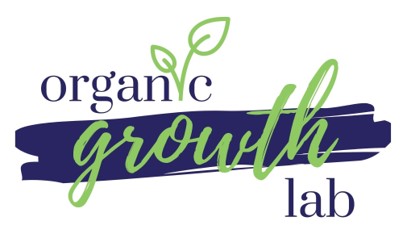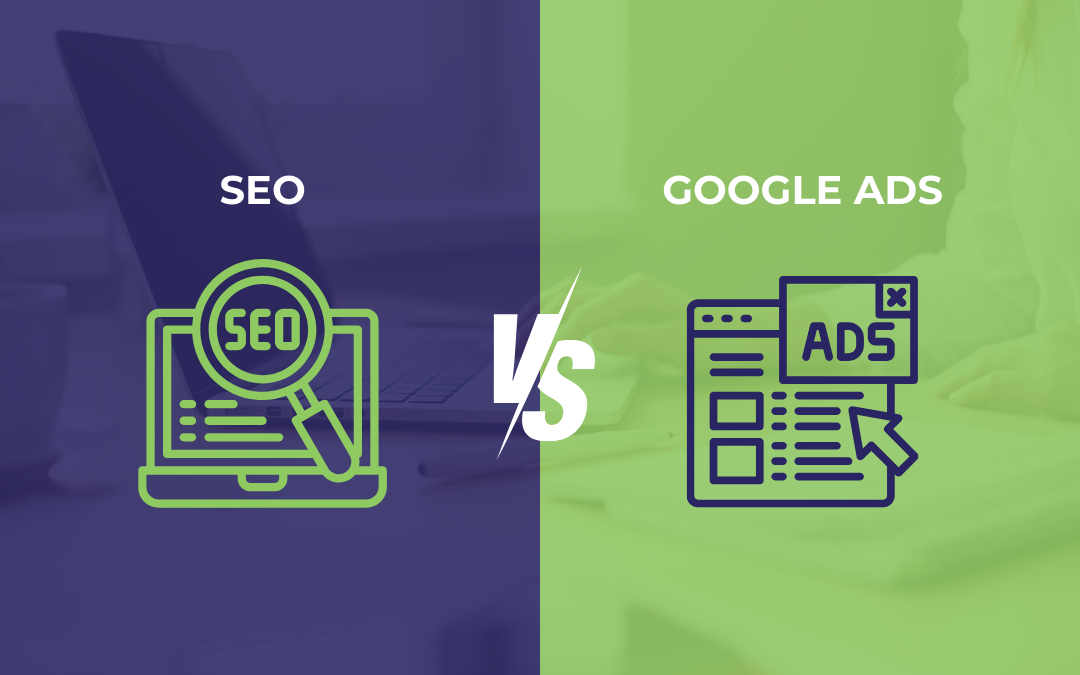Did you know that over 70% of SaaS customers base their purchasing decisions on the quality of the content they find? In today’s market, where every click counts, it’s important to make your content stand out. So, how do you do that consistently and effectively? It starts with understanding your audience and using data-driven strategies. If you want to improve your content and boost user engagement, these tips can really help. Let’s dive into what makes content truly valuable in the SaaS world.
Understanding SaaS Content Quality
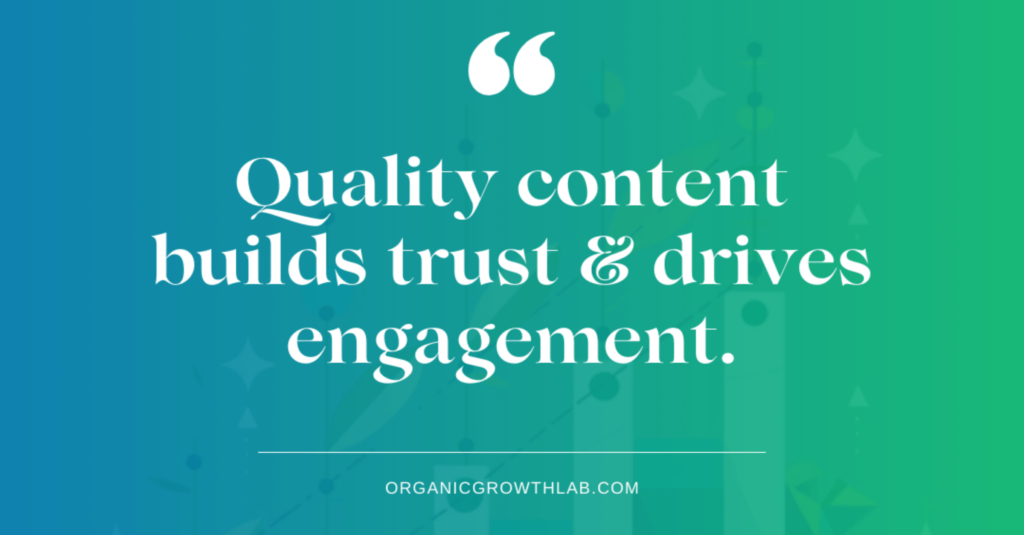
Understanding SaaS content quality is crucial for engaging and retaining customers in a competitive market. In the fast-paced world of SaaS, content isn’t just filler—it’s a powerful tool to establish your brand’s credibility and build lasting trust with your audience.
To harness the power of SaaS content quality, focus on creating engaging content that resonates with your target audience’s needs and challenges. Your content should be more than just informative; it should offer solutions and actionable insights that can transform your readers into loyal customers. This approach sets the stage for deeper user engagement, which is essential when attention spans are short and competition is fierce.
Building trust through high-quality content means consistently delivering value. When your audience sees that you understand their pain points and are committed to addressing them, you pave the way for a stronger, more authentic connection. This trust isn’t just about making a sale; it’s about fostering a relationship where your customers see you as a reliable partner in their journey.
By maintaining a high standard of SaaS content quality, you enhance your brand’s credibility. In an industry where expertise matters, well-crafted, insightful content can position your brand as a thought leader. This not only differentiates you from competitors but also reinforces your market positioning.
Importance of High-Quality Content

Crafting premium content is crucial for SaaS companies aiming to enhance engagement and drive user loyalty. When you create valuable content that resonates with your audience, you’re not just sharing information; you’re building a connection that fosters trust and credibility. Superior content is a cornerstone of an effective SaaS content marketing strategy, and it can profoundly impact your business in several ways.
First, by consistently producing top-quality content, you position your company as a thought leader in your industry. This reputation isn’t built overnight; it’s developed piece by piece, article by article. Thought leadership sets you apart from the competition, showcasing your expertise and deep understanding of industry trends and challenges.
Second, quality content is instrumental in building brand awareness. When your content is informative, engaging, and shareable, it naturally attracts more visitors to your website. This increased visibility translates to higher traffic and more opportunities for potential customers to engage with your brand.
Third, creating valuable content can directly impact your conversion rates. Studies show that companies prioritizing content quality experience five times higher conversion rates than those that don’t. This means the effort you put into ensuring your content is excellent pays off by turning prospects into loyal customers.
Here’s what superior content can do for your SaaS company:
- Increase website traffic: Premium content can boost website traffic by up to 2,000%.
- Enhance shareability: Quality content is three times more likely to be shared on social media.
By focusing on these elements, you can elevate your SaaS company’s content strategy and achieve significant results.
Key Elements of Quality Content
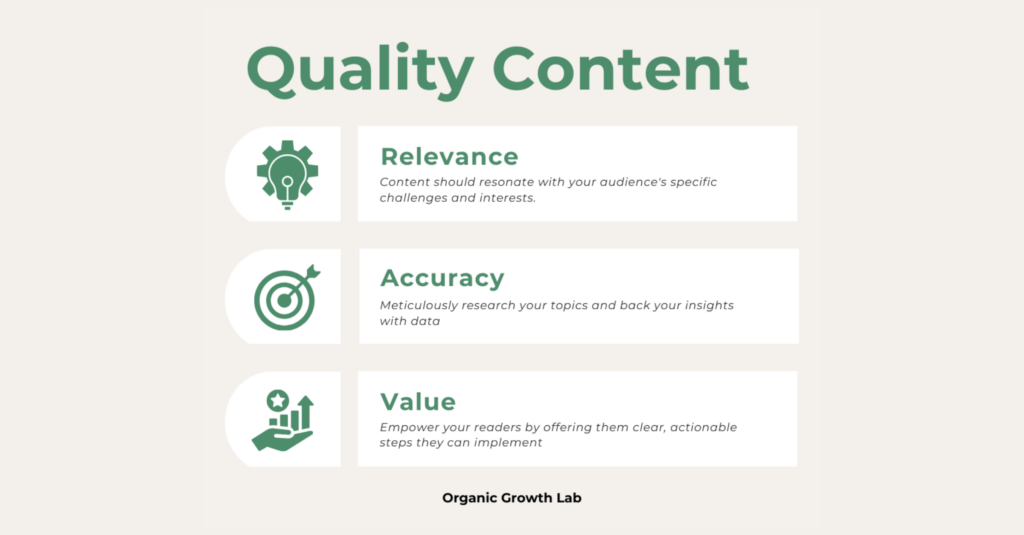
High-quality SaaS content hinges on relevance, accuracy, and the value it provides to your target audience. When creating content, it’s crucial to keep these key elements at the forefront of your strategy.
To truly stand out from the noise, focus on your audience’s pain points and deliver actionable advice that directly addresses their needs.
Relevance is pivotal. Your content needs to resonate with your audience’s specific challenges and interests. Understand their journey and tailor your content to guide them through their decision-making process. This approach positions you as a thought leader and keeps your audience engaged and coming back for more.
Accuracy is another pillar of quality content. Meticulously research your topics and back your insights with data. This not only strengthens your arguments but also builds trust with your audience. When they see you’re providing well-researched and reliable information, they’re more likely to view you as an authority in your industry.
Value is the third critical element. Your content should empower your readers by offering them clear, actionable steps they can implement. Go beyond basic information and provide deep, insightful content that solves real problems. The more value you provide, the stronger the connection you build with your audience.
Incorporate high-quality visuals, multimedia elements, and interactive features to enhance the overall user experience. Consistency in tone, style, and delivery is also essential. This ensures your content feels cohesive and professional, reinforcing your credibility and helping you stand out in a crowded market.
Audience-Centric Content Creation
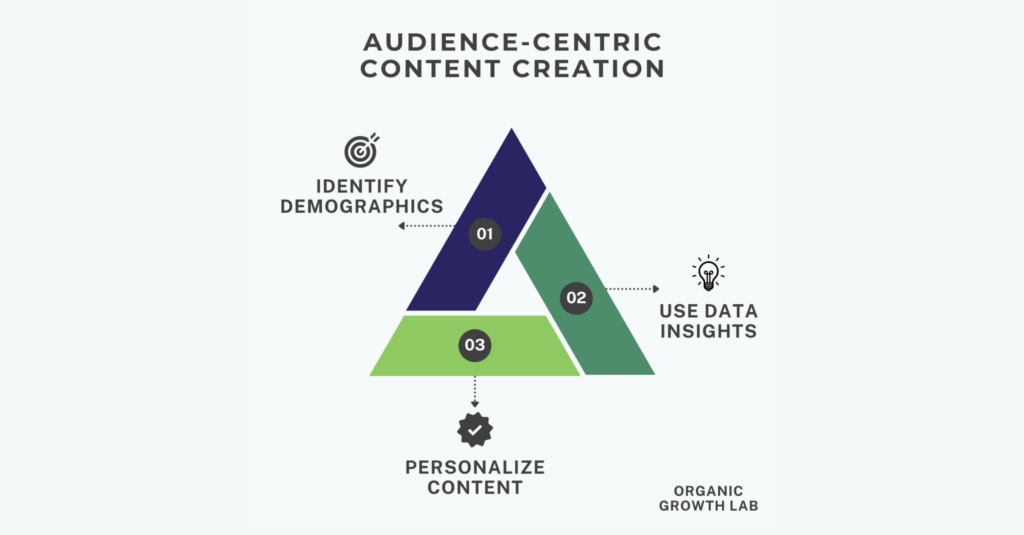
To create audience-centric content, you must first understand the specific needs and preferences of your target audience. Knowing who they are, what drives them, and what problems they need solving empowers you to craft content that truly resonates. This isn’t just about making a connection; it’s about building a relationship founded on trust and value.
By tailoring your content to meet these unique requirements, you’re not just speaking to them—you’re speaking for them.
Here’s how you can get started:
- Identify Audience Demographics: Know their age, profession, interests, and challenges. This helps in creating personalized content that feels relevant and engaging.
- Utilize Data-Driven Insights: Leverage analytics to understand what content performs best. Data-driven insights allow you to refine your strategy, ensuring your content always hits the mark.
Your aim should be to create personalized content that addresses specific pain points and aligns with their journey. This audience-centric approach fosters a sense of belonging and trust, ultimately paving the way for brand loyalty.
Relevance and Value in Content

Shifting focus from understanding your audience, it’s important to ensure your content remains relevant and valuable to keep them engaged and loyal. In the SaaS industry, content quality isn’t just a buzzword; it’s a game-changer. Relevant content can increase website traffic by 2.8 times, proving its significance. But relevance alone isn’t enough. Your content must also be value-driven, addressing the specific pain points your users face.
When you provide value, you’re not just offering information; you’re giving your audience solutions. This approach can boost conversion rates by up to 6 times. Imagine the relief your audience feels when your content answers their most pressing questions and resolves their challenges. That’s the kind of impact you want.
Customer engagement skyrockets by 40% when content is tailored to specific pain points. This isn’t merely about keeping your audience interested; it’s about making them feel understood and valued. In the SaaS industry, where competition is fierce, such engagement can set you apart from the crowd.
Moreover, prioritizing value-driven content leads to a 36% higher customer retention rate. Retaining customers is often more cost-effective than acquiring new ones, and quality content plays a pivotal role in ensuring they stick around. B2B buyers, in particular, are significantly influenced by relevant content, with 77% stating it affects their decision-making process.
Engagement Strategies for SaaS

In the competitive SaaS landscape, engagement strategies like interactive elements, personalized recommendations, and user-generated content can greatly enhance user interaction and retention. You’re not just competing for attention—you’re competing to keep it.
Here’s how to make your content resonate and keep users coming back for more:
-
Incorporate Interactive Elements: Quizzes, polls, and surveys are enjoyable and make users feel involved and heard. These tools allow you to gather valuable feedback while providing an engaging user experience. For example, a quick poll about feature preferences can inform your product development and marketing strategies.
-
Utilize Personalized Content Recommendations: Tailoring suggestions based on user behavior can significantly enhance engagement and retention. When users see content that aligns with their interests and needs, they’re more likely to stay engaged and explore further. Think of Netflix’s recommendation engine—customers keep coming back because they feel understood and catered to.
-
Leverage User-Generated Content: Encourage reviews, testimonials, and case studies from your satisfied customers. This content builds trust and provides authentic insights into how your SaaS solution benefits real users. It transforms your customers into brand advocates who help spread the word about your product.
Here are three actionable strategies to implement:
- Interactive Elements: Quizzes, polls, and surveys.
- Personalized Content Recommendations: Tailored suggestions based on user behavior.
- User-Generated Content: Reviews, testimonials, and case studies.
Don’t forget the power of social media platforms. Distribute your content across these channels to reach a wider audience and foster user participation.
With these engagement strategies, you’ll capture attention and create a loyal user base keen to interact with your SaaS solution.
Addressing Pain Points

Identifying and addressing your target audience’s pain points can transform your SaaS content into a powerful tool for building trust and driving engagement. When you pinpoint and solve the specific challenges your potential customers face, you show them that you understand their needs and can offer real solutions. This builds trust and sets the foundation for lasting credibility.
Focusing on pain points in your content isn’t just about highlighting problems; it’s about showcasing your SaaS solution as the hero of their story. By doing this, you create content that resonates deeply, driving customer engagement and loyalty. Here’s how addressing pain points can impact your SaaS content strategy:
| Pain Areas | Trust & Credibility | Customer Engagement |
|---|---|---|
| Identify needs | Show empathy | Increase interaction |
| Solve challenges | Build trust | Foster loyalty |
| Offer solutions | Enhance credibility | Boost conversions |
By addressing pain points directly, you’re not only solving issues but also differentiating yourself from competitors. This differentiation is vital in a crowded SaaS market. Your content should consistently remind your audience why your solution stands out and how it directly addresses their specific issues.
Key Takeaways:
- Identify and Address Pain Points: Focus on what your audience struggles with and how you can help.
- Build Trust and Credibility: Show empathy and provide reliable solutions to foster trust.
- Drive Customer Engagement: Create content that resonates, engages, and converts by addressing real problems.
By keeping these principles in mind, you can create powerful, engaging content that not only attracts but also retains customers by consistently meeting their needs and solving their problems.
Establishing Industry Authority

Building industry authority through high-quality content is crucial for positioning your SaaS brand as a trusted expert. By creating content that demonstrates deep industry expertise and innovative solutions, you’re not just participating in the market—you’re leading it.
Your audience seeks something beyond the ordinary, and your content can guide them toward success.
Here’s how to start:
-
Develop a Thought Leadership Strategy: Focus on delivering original, actionable, and forward-thinking insights that set you apart from others in the industry. Avoid rehashing what’s already out there; aim to offer fresh perspectives and valuable information.
-
Publish In-Depth Guides and Case Studies: Share detailed guides and case studies that address real-world problems. These pieces not only highlight your brand’s authority but also provide tangible value to your audience.
-
Host Webinars and Live Q&A Sessions: Engage directly with your audience through interactive content. Webinars and live Q&A sessions give you the chance to showcase your industry expertise in real time, helping to build customer trust.
-
Contribute to Industry Publications: Write for respected industry blogs or magazines. This helps position your brand as a thought leader, broadening your reach and reinforcing your authority.
The goal is to be seen as the go-to resource for reliable, expert advice. This builds customer trust, which is the cornerstone of long-term engagement and loyalty. Your content should anticipate and answer your audience’s questions, providing solutions they didn’t know they needed.
By doing so, you elevate your SaaS brand above the competition, making it synonymous with innovation and excellence.
Content Consistency

Ensuring content uniformity across your SaaS marketing efforts is crucial for building and maintaining trust with your audience. When your content is consistent, it not only looks polished but also reinforces your brand’s credibility and authority. This uniformity involves having a unified tone, style, and message across all platforms and touchpoints. When your audience knows what to expect from you, they’re more likely to engage with your content and take you seriously.
Here’s why consistency matters:
-
Boosts Engagement Rates: Regularly delivering high-quality content helps your audience become accustomed to your schedule. When people know when to expect updates from you, they’re more likely to read, share, and interact with your content. This predictability fosters a sense of reliability and keeps your brand top-of-mind.
-
Enhances Customer Retention: Consistent content builds trust. When customers see that you regularly provide valuable insights and solutions, they’re more likely to stay loyal. They come to view you as a dependable and knowledgeable resource, which is vital for retaining customers in the competitive SaaS landscape.
How to Maintain Content Uniformity:
-
Develop a Content Calendar: Plan and schedule your posts to ensure regular updates. This helps keep your content consistent and timely.
-
Use Style Guides: Create guidelines for your tone, style, and visuals. This ensures all your content maintains a cohesive look and feel.
The effort you put into maintaining content uniformity will strengthen your brand’s credibility, enhance your authority, and lead to higher engagement rates and better customer retention.
Iterative Content Improvement

Iterative content enhancement involves continuously refining your SaaS content based on performance data and user feedback. It’s not a one-time effort but an ongoing process where you adjust and evolve your content to better meet the needs of your target audience. This approach helps you stay ahead of market trends and supports the growth of your SaaS business.
Here’s how to effectively implement iterative content enhancement:
-
Analyze Performance Data: Dive into analytics to see which content resonates with your audience and which doesn’t. Look at metrics like engagement rates, bounce rates, and conversion rates to understand what works and what needs tweaking.
-
Gather User Feedback: Collect direct feedback from your users. Use surveys, reviews, and direct interactions to gain insights into what they find useful or lacking. This feedback can provide valuable perspectives that help you refine your content.
By focusing on iterative content enhancement, you keep your SaaS content relevant and engaging. This process involves making informed decisions that drive real results. Listening to your users and analyzing data enables you to produce high-quality content that truly resonates.
Embrace the freedom to evolve and adapt. As you continuously improve your content, you’ll not only meet but exceed your audience’s expectations, leading to higher user satisfaction and better ROI for your SaaS company.
Effective Content Distribution

To make the most of your content, you need to distribute it strategically across channels where your audience is most active. In the SaaS world, it’s not just about creating valuable content—it’s about ensuring it reaches the right people. Effective content distribution can help you access a wider audience and drive meaningful engagement.
Here’s how to approach it:
-
Leverage Social Media: Platforms like LinkedIn, Twitter, and Facebook are great for organic traffic. Post engaging content to drive traffic back to your site and boost lead generation. Meeting your audience where they spend their time is key.
-
Utilize Email Marketing: Send newsletters featuring your latest content to keep your audience informed and engaged. Regular email updates can build loyalty and encourage deeper interaction with your SaaS brand.
-
Optimize for SEO: Make sure your content is optimized for search engines. This will help your content appear in relevant search results, driving organic traffic and enhancing your site’s credibility.
-
Invest in Paid Distribution: Use targeted ads to get your content in front of potential customers who might not find you otherwise. This can significantly widen your reach and increase lead generation.
By strategically distributing your content across these channels, you’ll see benefits like more backlinks, higher indexed pages, and a stronger online presence for your SaaS business. Embrace these tactics, and watch your content contribute to tangible business growth.
Measuring Content Performance

Evaluating your content’s performance is crucial for understanding its impact and making informed improvements. By tracking key metrics, you can see what resonates with your audience and what doesn’t, allowing you to refine your content strategy and boost effectiveness.
Here are some essential metrics to track:
-
Website Traffic: This shows how many visitors are coming to your site, giving you a sense of how popular and far-reaching your content is.
-
Bounce Rate: A high bounce rate means visitors are leaving your site quickly, suggesting that your content might not be meeting their expectations. This is a signal that adjustments may be needed.
Regularly analyzing these metrics helps you identify trends and patterns that highlight what’s working and what needs improvement. Tools like StoryChief Rank Tracker can make this easier by providing a comprehensive overview of your performance.
Use the data you gather to guide your next steps. For example, if a blog post drives a lot of traffic but has a high bounce rate, it might need revision to better address your audience’s needs. On the other hand, if a piece performs well in terms of conversions, analyze what made it effective and apply those insights to future content.
By continually assessing and adjusting based on performance metrics, you’ll improve your content’s effectiveness and better engage your audience.
SEO Best Practices for SaaS
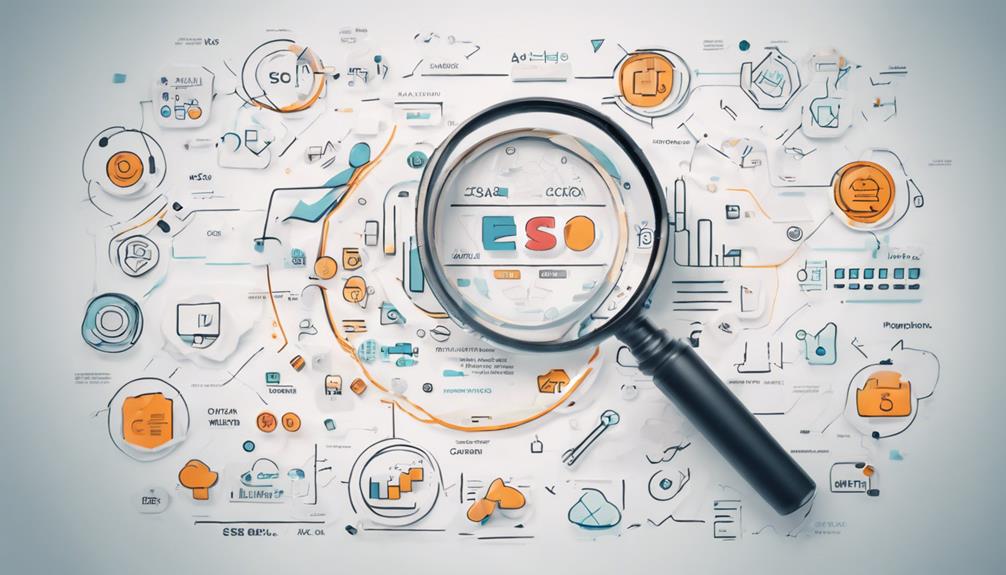
To truly boost your SaaS content’s visibility and reach, integrating SEO best practices is key. These strategies can help elevate your content from the shadows and ensure it gets the attention it deserves.
1. Keyword Research: Start with thorough keyword research to guide your content creation. Use tools like Google Keyword Planner or SEMrush to find keywords that resonate with your audience’s needs and have manageable competition. This will help you target the right terms and attract relevant traffic.
2. Quality Content Creation: Focus on creating high-quality content that provides real value. Rather than just filling your content with keywords, aim to solve problems, answer questions, and offer insights that highlight your expertise. Valuable content naturally earns backlinks, which are crucial for SEO success.
3. Backlink Building: Build relationships with reputable sites and influencers to earn backlinks. Engage in guest blogging, create shareable infographics, and participate in industry forums to boost your content’s authority. Each backlink serves as an endorsement of your content’s credibility.
4. Technical SEO: Pay attention to technical SEO elements. Ensure your URLs are SEO-friendly by including relevant keywords and keeping them concise. Optimize your meta descriptions and title tags to improve click-through rates. A well-structured site enhances user experience and keeps visitors engaged.
5. Performance Tracking: Continuously monitor your SEO performance with tools like Google Analytics. Analyze which strategies are effective and which need adjustments. This ongoing review allows you to refine your approach and maintain your competitive edge.
By applying these SEO best practices, you can enhance your SaaS content’s online presence, making it easier for your audience to find and engage with your brand.
Leveraging Customer Stories

Sharing customer stories is a game-changer for your SaaS content. Instead of just talking about your product’s features, you’re letting real users tell their own success stories. This approach makes your content more engaging and trustworthy.
Here’s why customer stories are so powerful:
1. Build Credibility: Real testimonials from actual users provide authentic proof that your product works. It’s much more convincing to see how others have benefited than to just hear it from you.
2. Foster Trust: When potential customers see real people who’ve solved similar problems using your product, they’re more likely to trust your brand. It’s like hearing a recommendation from a friend.
3. Boost Engagement and Conversions: Stories about real successes are way more compelling than just listing features. They show how your product can make a real difference, which can lead to more people taking action.
4. Humanize Your Brand: Customer stories add a personal touch to your content. They show that behind your product are real people with real needs, making your brand feel more relatable.
5. Show Real Impact: Highlighting specific challenges and results helps potential customers see how your product can work for them. It makes your content more relevant and useful.
By featuring customer stories—whether through detailed case studies, short testimonials, or video interviews—you create a stronger connection with your audience. It’s about showing that your product is more than just a tool; it’s a solution that really helps people.
Future Trends in SaaS Content

To keep your SaaS content ahead of the curve, embracing future trends and leveraging new technologies is key. Here’s a quick rundown of the trends to watch and how they can elevate your content strategy:
1. Personalization: Tailor your content to fit the unique needs and interests of your audience. Using advanced data analytics, you can create targeted content that directly addresses their pain points. For instance, if you know a segment of your audience struggles with a specific issue, craft content that offers solutions just for them. Personalization makes your content more relevant and engaging.
2. Segmentation: Break your audience into smaller, more specific groups based on factors like behavior or demographics. This allows you to send more precise messages that resonate with each group. For example, if you offer different features for different industries, create content that highlights those features for each specific industry.
3. Thought Leadership: Establish yourself as a go-to expert by sharing deep, insightful content. This could be through detailed articles, whitepapers, or webinars that tackle current challenges and innovations in your field. Thought leadership helps build your brand’s authority and earns the trust of your audience.
4. Content Communities: Build platforms where your audience can interact, share experiences, and learn from each other. Whether it’s a dedicated forum, a LinkedIn group, or a series of live Q&A sessions, creating a space for community engagement strengthens your brand’s relationship with your audience and keeps them coming back.
5. AI and Automation: Leverage these technologies to streamline content creation and distribution. AI can help you analyze data trends, automate routine tasks, and even generate content ideas. Automation tools can manage your posting schedule, track performance, and adjust strategies in real-time, ensuring your content stays fresh and relevant.
By staying on top of these trends and integrating them into your content strategy, you’ll not only keep your content relevant but also enhance its effectiveness, ensuring that you remain competitive in the fast-evolving SaaS landscape.
Conclusion
Imagine your SaaS content as a lighthouse in a stormy sea of information. By focusing on quality, relevance, and your audience’s needs, you’ll shine a light that guides them through the clutter with clear, actionable insights and engaging stories.
Don’t just create content—craft experiences that resonate and build trust. As you weave these golden threads into your strategy, you’ll not only distinguish yourself in a crowded market but also build enduring relationships that drive your growth and success. Want to see how powerful your content can be? Contact us now for a free consultation and let’s transform your content strategy together. Reach Out and start making waves in your industry!
